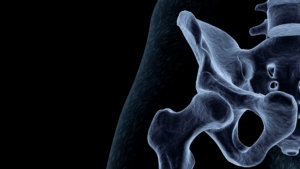Pelvic Floor Therapy For The Men
 I wanted to change the pace a bit this month and shift from my normal conversation regarding pelvic floor treatments for women and direct our conversation more towards the men.
I wanted to change the pace a bit this month and shift from my normal conversation regarding pelvic floor treatments for women and direct our conversation more towards the men.
First and foremost, yes – men do experience pelvic floor symptoms that can be treated with simple physical therapy for the pelvic floor muscles just like we treat women for similar conditions. Obliviously due to the differences in anatomy, the physical treatment differs slightly but interestingly many of the lifestyle changes are the same!
Although most of my current case load is female, I do have male patients that come in with a variety of concerns that are treated using internal and external therapy and have had great results including full resolution of their symptoms.
What conditions can men be treated for with pelvic floor physical therapy?
What kinds of conditions will cause men to seek treatment of their pelvic floor? I have treated a variety of conditions including increased urge and frequency of urination, chronic constipation, pain with intercourse, Erectile dysfunction (ED), incontinence, incomplete emptying of the bladder, pelvic pain, and/or poor core strength/DRA. Now this list is by no means the only conditions that I treat, but they are some of the most common cases I tend to see at our clinic.
What are the treatments for male pelvic floor dysfunction?
What are the treatments for male pelvic floor dysfunction? Treatments for pelvic floor conditions can consist of patient education, manual therapy, exercise, biofeedback, neuromuscular re-education, ice/heat, and ADL training.
Every person that comes into the clinic is evaluated on an individual basis, and the treatments will vary for each patient and each condition. Many times, treatment can start with simple lifestyle changes including postural work, changing bathroom habits, working on breath and relaxation, and increasing low core contraction/control with many activities of daily living and exercising.
How can you tell which muscles are involved?
If the treatment warrants an internal evaluation, we will investigate which muscles and structures are affected and come up with a treatment plan of strengthening or lengthening the muscles using trigger point release and other manual techniques. Sometimes we will bring in a “biofeedback” device to help relax and restore normal muscle tone. Biofeedback can be used to help understand when the pelvic floor is tight, even when it might not feel tight! When we can identify a tight group of muscles like the pelvic floor, treatment for this area becomes much easier.
Tightness or weakness of the pelvic floor muscles?
Tightness in the pelvic floor is related to increased urge to urinate, constipation, pelvic floor pain, among other conditions. Interestingly enough, if there is tightness in a group of muscles, these muscles tend to be weak as well. In other words, not only will treatment then consist of reducing the tightness to the pelvic floor using various interventions, but exercise is warranted to help strengthen the muscles and surrounding areas to encourage endurance with activities of daily living without exacerbation of symptoms.
If you believe you are experiencing symptoms that could be impacting your daily life, please call our clinic for a free 15 min consult to discuss your symptoms and to see if this type of therapy is right for you!
